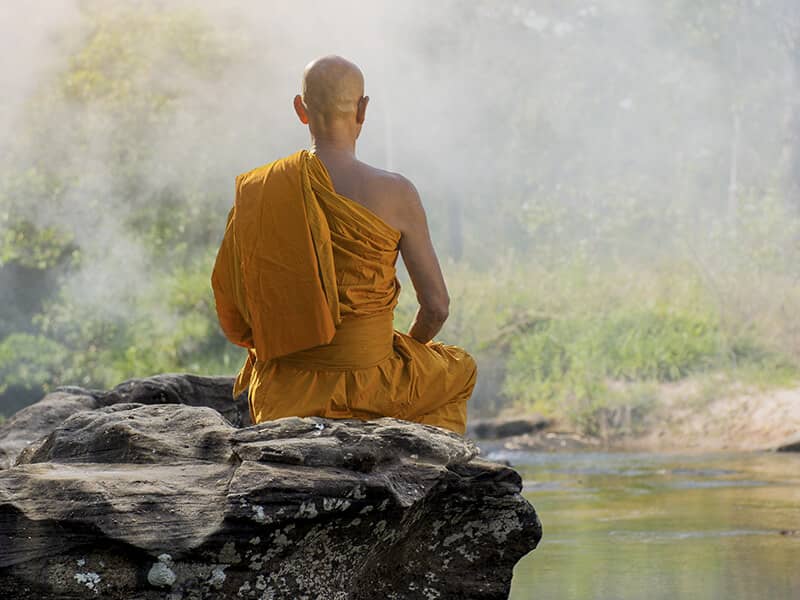Shinjo Ito, 1936
Shinjo entered the Daigoji monastery in Kyoto in 1936, where he became a Buddhist master. The trigger for this change in his career was his encounter with an ancient statue of Achalanatha, the Buddhist god of fire said to represent a Buddhist's ability to overcome obstacles.
Photos and text courtesy of Shinnyo-en
Shakyamuni Merging from the Mountains
An image of the Buddha Shakyamuni emerging from the mountains, where he endured grueling ascetic privations. From these he learned the "middle way"--that neither extreme self-denial nor self-indulgence was the way to help humanity. Most sculptures of this popular image depict the Buddha as gaunt and near death, but Shinjo chose to show him as strong, perhaps expressing the Buddha's heart and resolve, rather than his physical appearance.
Shakyamuni Emerging from the Mountains, 1963, 84.5 cm, Bronze
Photos and text courtesy of Shinnyo-en
Bodhisattva Samantavhadra
Samantabhadra, literally, "he who is all-pervadingly good," is central to the longevity prayers of esoteric Buddhism. Multi-armed pieces are extremely difficult to sculpt, but here, Shinjo achieves an almost perfect balance.
Bodhisattva Samantabhadra, 1978, 26.7 cm, Bronze
Photos and text courtesy of Shinnyo-en
Aryavalokiteshvara
Shinjo may have based the aristocratic bearing of this work on the first 29 years of Shakyamuni Buddha's life that he spent as a prince, and allows us a glimpse of how the artist imagined Shakyamuni in his youth.
Aryavalokiteshvara, 1975, 87 cm, Bronze
Photos and text courtesy of shinnyo-en
Paired Mahavairochana and Amitabha
In esoteric Buddhism, Tathagata Vairochana is revered as the Buddha at the center of the universe. Amitabha is the central Buddha in the Jodo sect and master of the Pure Land. The term Joraku, which means "eternity and bliss," appears in the center. It links the two images, and by doing so conveys the message of the essential unity of esoteric and exoteric Buddhism.
Tathagata Vairochana & Tathagata Amitabha, 1964, 29.5x34.5 cm, Bronze
Photos and text courtesy of Shinnyo-en
Shinnyo Ichinyo, Oneness with Shinnyo
"Shinnyo Ichinyo" reads this engraving on pine. It means "universal truth" and "oneness," or "Oneness with Shinnyo."
Shinnyo Ichinyo, 1968, 59.5x158.7 cm, Pine
Photos and text courtesy of Shinnyo-en
Felicitations
As he grew older, Shinjo concentrated more on engraving and calligraphy, although he never stopped creating. For this piece, Shinjo expresses congratulations to all with calligraphy joyously written on a delicate fan.
Kotobuki, 1972, 27.2x42, Calligraphy on fan
Photos and text courtesy of Shinnyo-en
Shinjo Ito in Studio
Shinjo carving the Great Parinirvana Image in 1957. His singular purpose was to express the nirvana sutra's teachings in physical form.
Shinjo Ito in Studio, 1957, Photograph
Photos and text courtesy of Shinnyo-en
Tathagata Vairochana
Sculpture of Tathagata Vairochana (Diamond Element) Buddha, making the "wisdom" mudra (hand sign).
Tathagata Vairochana (Diamond Element), 1968, Bronze
Photos and text courtesy of Shinnyo-en

